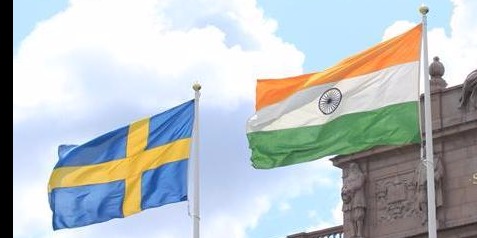

Similarities between Swedish and Hindi languages
An Indian’s observations from her one year in Sweden
Wednesday July 13, 2016,
3 min Read
Sweden is a Nordic, Scandinavian country to the very north of Europe. It is a land where the sun never sets during summers when sunlight is blindingly bright, while it is dark throughout the winter days when street lights reflect off the white snow so much that the entire city starts to look like a glittering wonderland, augmented by the seasonal municipal decorations for Jul (Swedish equivalent of Christmas) and Lucia. I hear that only the night-sky in the very north where Aurora Borealis (Northern Lights) dance, tops the city glitters of Gothenburg, south-west Sweden, where I am based (Gothenburg can be thought of as the original Goth city)!
Other than the fact that Sweden actually has places named Västerås (Westeros, a name any viewer of the TV series ‘Game of Thrones’ will identify with), and this really is ‘The North’, a very interesting fact that I found amusing is the similarity between Hindi, the official language of India, and Swedish. Amazingly, even as Swedish is closer to German than to English, one can note how a Hindi word morphs into a Swedish word which in turn morphs into English. Let me amuse you with a few examples. Any students or professionals coming to Sweden from India or going to India from Sweden will find these observations helping them find more in common here with home than they might otherwise think.
A word of literal ease – since Hindi is written in Devnagri script, while Svenska (Swedish name of Swedish language) and English use the Roman alphabet, I will transliterate and write Hindi too in the Roman script for ease of printing and reading. I will write Devnagri in brackets.
Let us begin our observations with the Swedish words Svenska and Engelska for Swedish and English respectively. One cannot help but notice the use of suffix ka in Swedish very similar to the Hindi ka (का ) which is used to convey belonging. The word for ‘plate’, tallrik (pronounced as ‘Thaalrik’) in Svenska is strikingly similar to the Hindi word Thaali (थाली ) for it. However, that is almost all the closeness one can find between the Swedish food and Indian food , except that ‘sugar’ also is shakar (शकर ) in Hindi and söcker (pronounced as ‘sakar’) in Svenska. Outside the kitchen, while dresses might differ, the ubiquitous garment ‘shirt’, called kurta (कुर्ता ) in Hindi is called skjorta (pronounced as ‘hurta’) in Swedish. The Swedish word for ‘quilt’, täcke (pronounced as ‘tekiya’) becomes the Hindi word for pillow, takiya (तकिया ). The similarity goes uncannily on to the words for yes and no – ja (pronounced ‘yau’) and nej (pronounced ‘nai’) in Swedish are the same as haan (हाँ ) and nahi (नहीं ) in Hindi. What more, there is a dialect of Hindi, called Bundelkhandi, which comes even closer to Swedish, as there ‘yes’ is hao (हओ ), ‘but’ is mano (मनो ) (which is men in Svenska) and ‘so’ is so (सो ) (så in Swedish)!
It becomes more interesting when one notes that the common word ‘and’ in Hindi is aur (और ) which becomes och (pronounced as ‘okh’) in Swedish. The word for ‘day’ in Swedish is dygn (pronounced as ‘din’) which is the exact same as in Hindi, din (दिन )!! With all these similarities and many more that I would yet be to discover, I like to think that we people of earth, människor (pronounced as ‘manishur’) in Swedish, manushya (मनुष्य ) in Hindi, are more similar than we think we are.
शुभ दिन (Shubh Din)!
Med Vanliga Halsingar!
Divya

undefined


